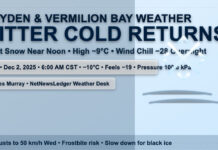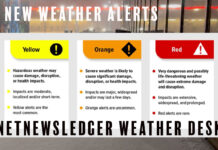Understanding the Heat Warning
When Environment Canada issues a Heat Warning, it’s a sign that temperatures are expected to rise to potentially dangerous levels. For Thunder Bay residents, especially during the summer, understanding how to stay safe is important.
A Heat Warning typically indicates temperatures above 29°C during the day, often coupled with high humidity. Prolonged exposure to these conditions can lead to heat-related illnesses, so it’s vital to take precautions.
Top Tips to Stay Cool
Staying cool during a heatwave is essential for your health and comfort. Here are some effective strategies:
- Stay Indoors: If possible, remain indoors during peak heat hours, usually between 11 AM and 3 PM. If you don’t have air conditioning at home, consider spending time in air-conditioned public places like shopping malls or libraries.
- Use Fans and Cooling Devices: Fans can help circulate air, making your environment feel cooler. However, if the temperature rises above 35°C, fans might not prevent heat-related illness. In such cases, consider using cooling cloths or taking cool showers to lower your body temperature.
- Dress Appropriately: Wear loose, lightweight, and light-coloured clothing to help your body stay cool. Wide-brimmed hats and sunglasses are also recommended if you need to be outside.
- Close Curtains and Blinds: Keep your home cooler by closing curtains or blinds during the day to block out the sun’s heat.
Hydration Strategies for Hot Days
Hydration is key during a heat warning. Your body loses more water when it’s hot, so it’s essential to drink more fluids than usual. Here are some tips:
- Drink Plenty of Water: Aim to drink at least 8-10 glasses of water per day. Carry a water bottle with you and take regular sips, even if you don’t feel thirsty.
- Avoid Alcohol and Caffeine: Both alcohol and caffeine can dehydrate your body, so it’s best to limit these during a heatwave.
- Incorporate Hydrating Foods: Foods like cucumbers, watermelon, and leafy greens have high water content and can help keep you hydrated.
Caring for Your Pets in Extreme Heat
Pets are also vulnerable to heat, and it’s important to take steps to keep them safe and comfortable:
- Provide Plenty of Fresh Water: Ensure your pets have access to fresh, cool water at all times. Consider placing multiple water bowls around your home.
- Limit Outdoor Activity: Walk your pets early in the morning or late in the evening when temperatures are cooler. Avoid hot pavement, as it can burn your pet’s paws.
- Never Leave Pets in a Parked Car: Temperatures inside a car can rise rapidly, even with windows cracked. Leaving a pet in a hot car can be fatal.
- Create a Cool Space: If possible, keep your pets indoors during peak heat hours. Make sure they have a cool, shaded area to rest in.
- Watch for Signs of Overheating: Symptoms of overheating in pets include excessive panting, drooling, and lethargy. If your pet shows signs of heat stress, move them to a cool area immediately and provide water.
- Grooming Considerations: Regular grooming can help your pet stay cool. However, avoid shaving your dog completely, as their fur provides some protection against the sun.
Recognizing and Preventing Heat-Related Illnesses
Heat-related illnesses, such as heat exhaustion and heatstroke, are serious and can be life-threatening. Here’s how to recognize and prevent them:
- Symptoms of Heat Exhaustion: These include heavy sweating, weakness, dizziness, nausea, and headaches. If you experience these symptoms, move to a cooler place, drink water, and apply cool cloths to your body.
- Signs of Heatstroke: Heatstroke is a medical emergency. Symptoms include a high body temperature (above 40°C), confusion, rapid pulse, and unconsciousness. Call 911 immediately if you suspect someone is experiencing heatstroke.
Special Considerations for Vulnerable Populations
Certain groups, such as the elderly, young children, and those with chronic illnesses, are more vulnerable during extreme heat. Here are some additional tips:
- Check on Neighbours: If you know someone who may be at risk, such as an elderly neighbour, check in on them regularly.
- Limit Physical Activity: Encourage children to play indoors during peak heat hours, and if you’re caring for someone with health issues, ensure they are well-hydrated and in a cool environment.
Community Resources and Cooling Centres in Thunder Bay
Thunder Bay offers various resources to help residents stay cool during a heatwave:
- Public Pools and Splash Pads: Enjoy a dip in one of Thunder Bay’s public pools or visit a splash pad for a refreshing way to cool off.
- Splash Pads and Boulevard Lake: Enjoy the slightly cooler weather along Lake Superior.
- Emergency Services: If you or someone you know is suffering from a heat-related illness, don’t hesitate to contact emergency services for help.
By taking these precautions, you can stay safe and comfortable during Thunder Bay’s summer heatwaves.







